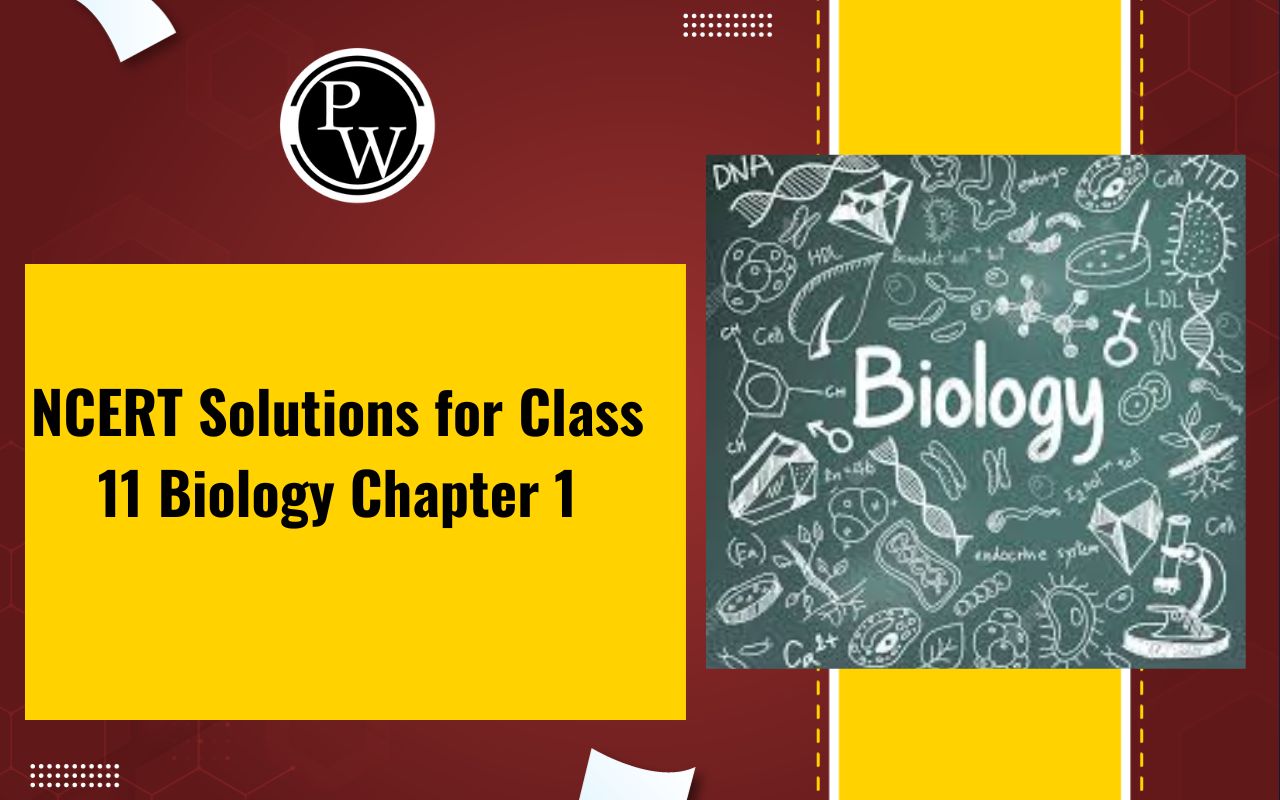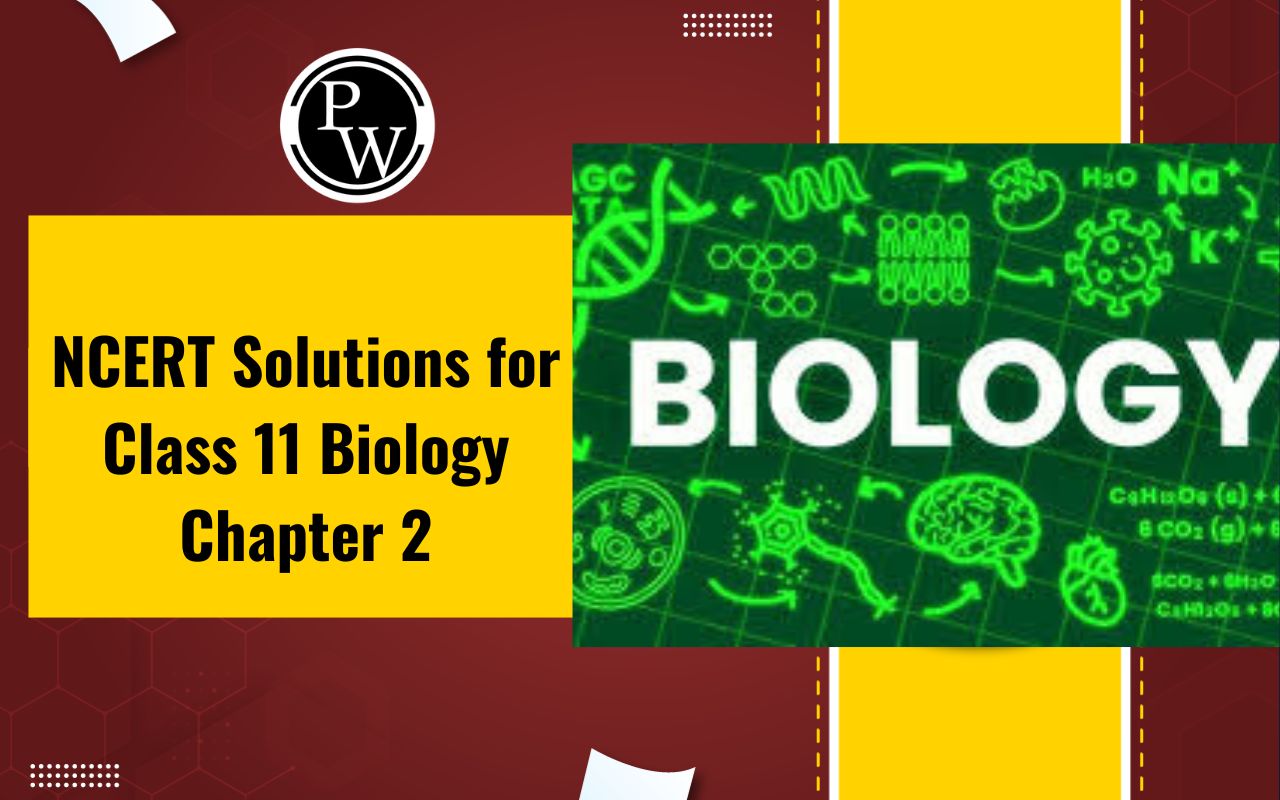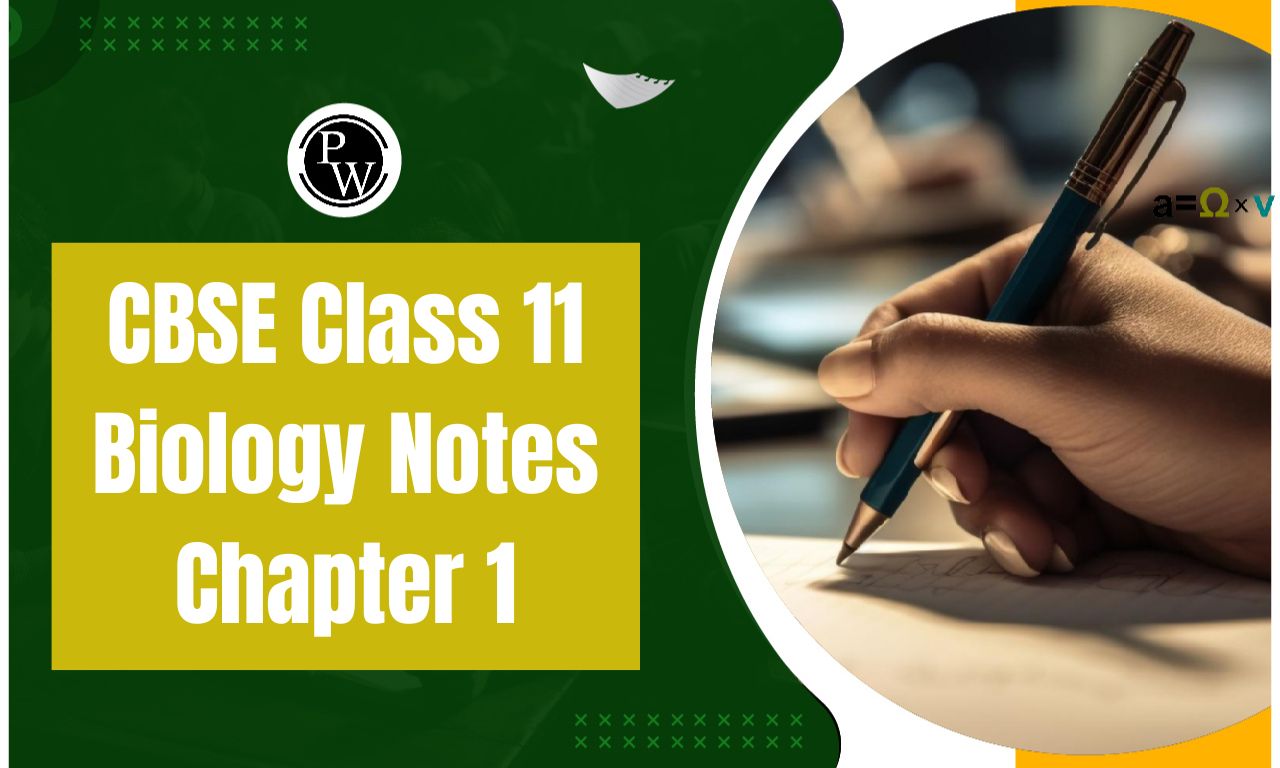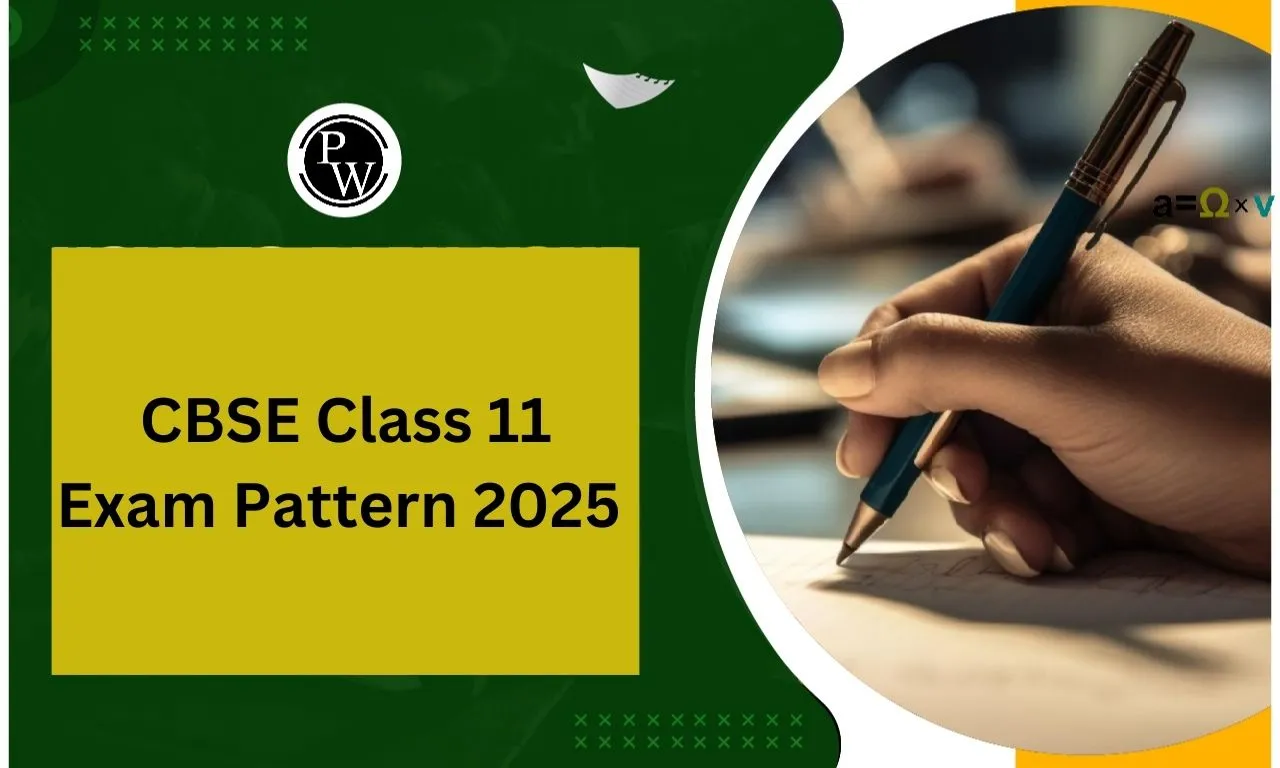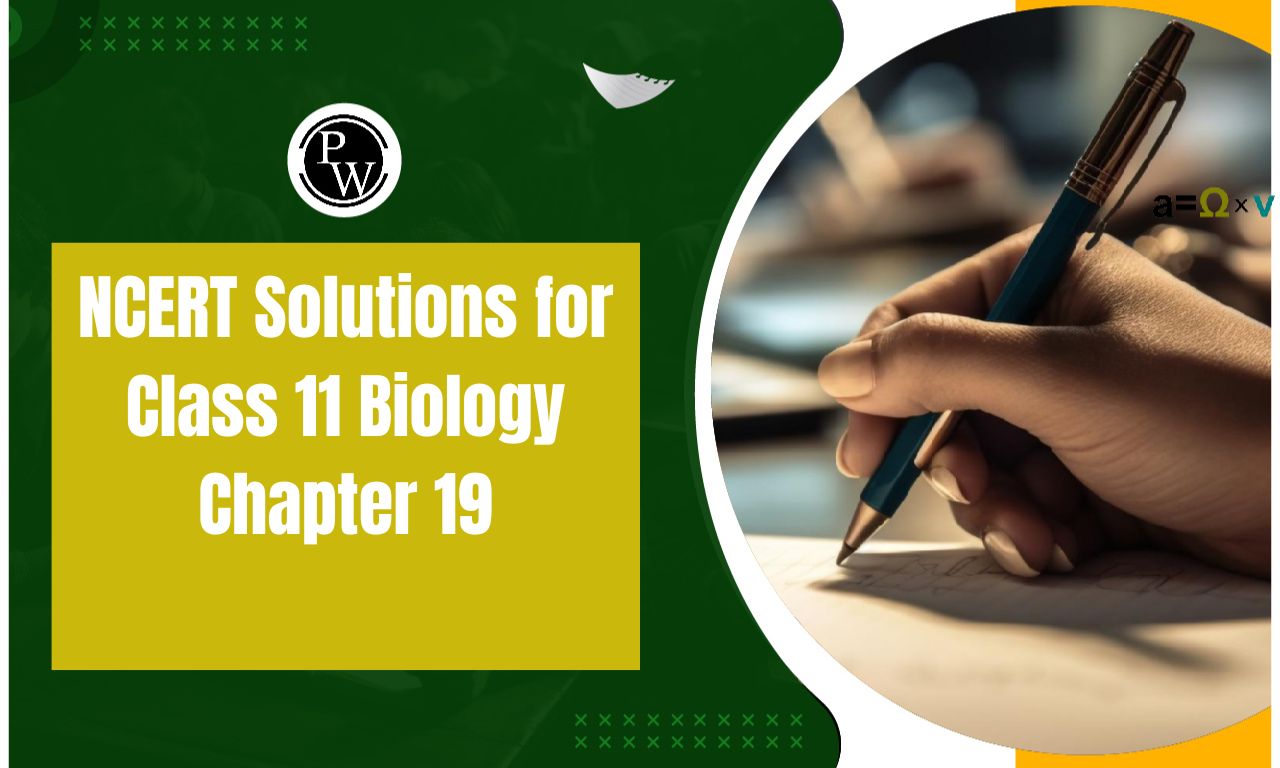
NCERT Solutions for Class 11 Biology Chapter 19: The NCERT Solutions for Class 11 Biology Chapter 19 - Chemical Coordination and Integration provide detailed answers to all textbook questions, helping students understand the role of hormones in regulating physiological processes.
The solutions cover topics like the endocrine glands, their secretions, and the mechanisms of hormone action. Key glands, including the hypothalamus, pituitary, thyroid, and pancreas, are explained in detail. These solutions are essential for grasping complex concepts, preparing for exams, and building a strong foundation in human physiology. Available in a step-by-step format, they enhance clarity and make learning effective, enabling students to excel in their studies.NCERT Solutions for Class 11 Biology Chapter 19 Overview
The NCERT Solutions for Class 11 Biology Chapter 19 Chemical Coordination and Integration are crucial for mastering the concepts of hormonal regulation and endocrine systems. These solutions provide clear, step-by-step answers to textbook questions, helping students understand the functions of glands like the hypothalamus, pituitary, thyroid, and pancreas. By explaining hormone actions and their role in homeostasis, these solutions strengthen foundational knowledge in human physiology. They are essential for effective exam preparation, simplifying complex topics and enhancing problem-solving skills. Using these solutions ensures comprehensive learning, clarity, and confidence, making them invaluable for academic success and future competitive exams.NCERT Solutions for Class 11 Biology Chapter 19 PDF
NCERT Solutions for Class 11 Biology Chapter 19 Chemical Coordination and Integration Question Answer
Below is the NCERT Solutions for Class 11 Biology Chapter 19 Chemical Coordination and Integration Question Answer -1. Define the following:
(a) Exocrine gland
(b) Endocrine gland
(c) Hormone
Solution:
1. Exocrine glands: These glands release their secretions into ducts that carry them to specific body organs or to the body's surface. Endocrine glands: These ductless glands release their secretions into the circulation, which then transports them to distant target organs. 3. Hormone: This non-nutrient substance is secreted in trace amounts and functions as an intercellular messenger.2. Diagrammatically indicate the location of the various endocrine glands in our body.
Solution:
The diagram indicating the location of the various endocrine glands in our body is given below:

3. List the hormones secreted by the following:
(a) Hypothalamus
(b) Pituitary
(c) Thyroid
(d) Parathyroid
(e) Adrenal
(f) Pancreas
(g) Testis
(h) Ovary
(i) Thymus
(j) Atrium
(k) Kidney
(l) G-I Tract
Solution:
The hormones secreted by the following structures are as follows:| Name of the Structure | Hormone Secreted | |
| Hypothalamus | Releasing hormone | Inhibiting hormone |
| Adrenocorticotropin-releasing hormone (ARH) Thyrotropin-releasing hormone (TRH) Luteinising hormone-releasing hormone (LH-RH) Follicle-stimulating hormone-releasing hormone (FSH – RH) Prolactin-releasing hormone (PRH) Growth hormone-releasing hormone Melanocyte-stimulating hormone-releasing hormone | Growth inhibiting hormone Prolactin inhibiting hormone Melanocyte-stimulating hormone-inhibiting hormone | |
| Pituitary | Neurohyophysis: Oxytocin Anti-diuretic hormone (Vasopressin) Adenohypophysis: Follicle-stimulating hormone (FSH) Growth hormone (GH) Luteinising hormone (LH) Thyroid-stimulating hormone (TSH) Adrenocorticotropin hormone (ACTH) Intermediate lobe: Melanocyte-stimulating hormone (MSH) | |
| Thyroid | Calcitonin Tri-iodothyronine(T 3 ) Tetraiodothyronine/Thyroxine(T 4 ) | |
| Parathyroid | Parathormone (PTH) | |
| Adrenal | Adrenal cortex – Mineralocorticoids, Glucocorticoids Adrenal medulla – Adrenaline, Noradrenaline | |
| Pancreas | Glucagon, Insulin, Somatostatin | |
| Testis | Testosterone, Androsterone | |
| Ovary | Relaxin, Oestrogen, Progesterone, | |
| Thymus | Thymosin | |
| Atrium | Atrial Natriuretic Factor (ANF) | |
| Kidney | Erythropoietin | |
| G-I Tract | Stomach: Gastrin Intestine: Secretin, Enterogastrone, Cholecystokinin, Enterocrinin, Duocrinin Liver: Angiotensinogen | |
4. Fill in the blanks:
Hormones Target Gland
(a) Hypothalamic hormones ______________
(b) Thyrotrophin (TSH) __________________
(c) Corticotrophin (ACTH) ________________
(d) Gonadotrophins (LH, FSH) _____________
(e) Melanotrophin (MSH) ________________
Solution:
(a) Hypothalamic hormones – Pituitary gland (b) Thyrotrophin (TSH) – Thyroid gland (c) Corticotrophin (ACTH) – Adrenal cortex (d) Gonadotrophins (LH, FSH) – Testis and ovaries (e) Melanotrophin (MSH) – Pigment cells of the dermis of the skin5. Write short notes on the functions of the following hormones:
(a) Parathyroid hormone (PTH)
(b) Thyroid hormones
(c) Thymosins
(d) Androgens
(e) Estrogens
(f) Insulin and Glucagon
Solution:
(a) Parathyroid hormone (PTH) 1. It is a peptide hormone which is secreted by the parathyroid gland 2. The circulating levels of calcium ions regulate its secretion 3. The levels of calcium ions in the blood are increased by PTH. 4. The bone resorption process is triggered by PTH. 5. The reabsorption of calcium ions by the renal tubules is triggered, which increases calcium ions absorption from the food that is digested 6. PTH is a hypercalcemic hormone which increases the blood Ca2+ levels 7. It has a critical role to play in balancing calcium in the body along with TCT, i.e., in calcium homeostasis. (b) Thyroid hormones Thyroxine/Tetraiodothyronine(T 4 ) 1. This hormone checks the basal metabolic rate (BMR) and body growth, such as mental development and ossification of bones 2. The body weight is controlled by it 3. It controls the tissue differentiation and metamorphosis of the tadpole larva into an adult frog 4. Formation of RBC is suppressed 5. Tri-iodothyronine(T 3 ) – The energy consumption and the body’s oxygen are increased. It also increases heart rate and force of contraction, which in turn increases the cardiac output (c) Thymosin 1. The differentiation of T-lymphocytes is triggered, which provides cell-mediated immunity 2. The antibody production is facilitated to provide humoral immunity 3. The rate of division of cells in children is triggered, thereby promoting growth (d) Androgens 1. The interstitial cells located in the intertubular space generate a collection of hormones called androgens mainly testosterone 2. Checks the maturation, development and functions of the male accessory sex organs such as epididymis, vas deferens, urethra, seminal vesicles, prostate gland etc. 3. They trigger the growth of facial and axillary hair, muscles, aggressiveness, low pitch of voice etc. 4. In the phenomena of spermatogenesis, they play a critical stimulatory role 5. They act on the central neural system, which influences the male sexual behaviour 6. They generate anabolic effects on carbohydrate metabolism and protein (e) Estrogen 1. It stimulates the growth and development of the female reproductive organs, specifically the uterus, vagina, and fallopian tube, as well as the creation of ovarian follicles. 2. It results in a decrease in FSH secretion and an increase in LH secretion. 3. The uterus becomes more sensitive to the hormone oxytocin. 4. The mammary gland's development is promoted 5. The sexual conduct of women is controlled (f) Insulin 1. The regulation of glucose homeostasis 2. It affects adipocytes and hepatocytes. 3. It initiates the movement of glucose from the blood to the muscles. 4. Glycogenesis, or the conversion of glucose to glycogen, is brought on by the facilitation of glucose oxidation, which results in hyperglycemia. Glucagon 1. It is critical in maintaining normal blood glucose levels 2. It acts on hepatocytes which trigger the conversion of glycogen to glucose 3. The gluconeogenesis phenomena is triggered, i.e. the conversion of non-carbohydrate particles, namely, proteins and fats, to glucose6. Give example(s) of the following:
(a) Hyperglycemic hormone and hypoglycemic hormone
(b) Hypercalcemic hormone
(c) Gonadotrophic hormones
(d) Progestational hormone
(e) Blood pressure lowering hormone
(f) Androgens and estrogens
Solution:
(a) Hyperglycemic hormone and hypoglycemic hormone – Glucagon and Insulin, respectively (b) Hypercalcemic hormone – Parathormone hormone (PTH) (c) Gonadotrophic hormones – Follicle-stimulating hormone (FSH) and luteinising hormone (LH) (d) Progestational hormone – Progesterone (e) Blood pressure lowering hormone – Atrial natriuretic factor (ANF) (f) Androgens and estrogens – Androgen – Testosterone and androsterone Estrogen – β- oestradiol7. Which hormonal deficiency is responsible for the following?
(a) Diabetes mellitus
(b) Goitre
(c) Cretinism
Solution:
The hormonal deficiency responsible for the above are as follows: (a) Diabetes mellitus – Insulin (inadequate secretion) which is caused due to abnormally high glucose levels in the blood (b) Goitre – Thyroxin (inadequate secretion) (c) Cretinism – Thyroid (inadequate secretion)8. Briefly explain the mechanism of action of FSH.
Solution:
Follicle-stimulating hormone (FSH) is a glycoprotein polypeptide hormone which is not soluble in lipids and, therefore, cannot enter the target cell. It binds to the surface of the cell, which activates the cellular systems to carry out its functionalities. Mechanism of FSH 1. The hormone-receptor complex is created when the FSH molecule attaches itself to the receptor protein on the cell surface. 2. The adenyl cyclase enzyme is activated by the receptor complex when the hormone is formed. 3. This enzyme triggers the follicular cells of the granulose membrane to create oestrogens by converting ATP to cyclic AMP, a second messenger.9. Match the following:
| Column I | Column II |
| (a) T4 | (i) Hypothalamus |
| (b) PTH | (ii) Thyroid |
| (c) GnRH | (iii) Pituitary |
| (d) LH | (iv) Parathyroid |
Solution:
| Column I | Column II |
| (a) T4 | (ii) Thyroid |
| (b) PTH | (iv) Parathyroid |
| (c) GnRH | (i) Hypothalamus |
| (d) LH | (iii) Pituitary |
Benefits of Using NCERT Solutions for Class 11 Biology Chapter 19
Conceptual Clarity : Detailed explanations simplify complex topics like endocrine glands, hormones, and their functions.
Exam-Focused : Solutions align with the NCERT syllabus, covering all important questions for board and competitive exams.
Time-Saving : Step-by-step answers help in quick and efficient revision.
Error-Free Solutions : Expert-authored content ensures accuracy and reliability.
Confidence Boost : Regular practice with these solutions enhances understanding, improving exam performance.
Convenient Learning : Easy access to well-structured solutions supports seamless self-study and reinforces key physiological concepts.




